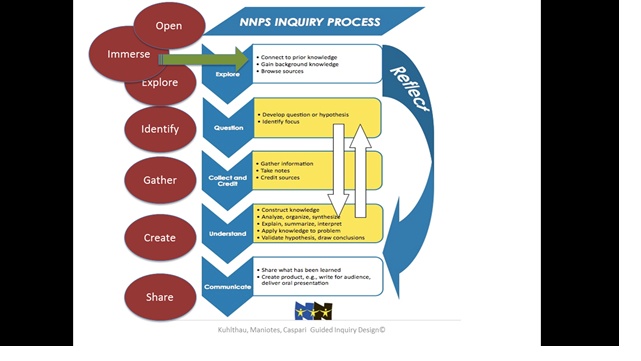

Hello from Hampton Roads, Virginia!
My name is Patrice (Patty) Lambusta and I am a middle school librarian at Passage Middle School in Newport News.
Like many librarians, I am a former English teacher who loved to teach reading and writing, but would grow sick at the thought of teaching another research unit. I absolutely loathed Science Fair because I was responsible for the paper, which meant I was also responsible for the research. Like many before me, teaching thirty ‘tweens how to create questions, locate and evaluate information, and synthesize that information into a paper on a topic assigned to them by the science teacher, was more than I could handle. Index cards became my nemesis.
I had a wonderful librarian at the time, who tried to get me to collaborate on an “inquiry” unit. I remember running from her in the hallways, because I thought she was just using a fancy word for another traditional “research” project. It wasn’t until I became a librarian that I realized “research” is embedded into the inquiry process. It is the process that supports student learning.
I was fortunate that my district library program had already created an inquiry process model and was in the process of integrating it into the district curriculum. At my school, I had created an inquiry unit on pop culture using Newport News Public School (NNPS) Inquiry Process Model. Students were allowed to pick any pop culture topic they wished. Although students were highly engaged in the unit, they struggled with the first stage of the original model, creating their own questions. During 2012, while librarians (myself included) were trying to create rubrics to support the process, we discovered that there were issues with the process itself, namely having students create questions from the very beginning.
As we struggled with how to fix this issue, district librarians began professional development on Guided Inquiry Design with Dr. Leslie Maniotes. We also read the publication Guided Inquiry Design: A Framework for Inquiry in Your School, coauthored by Leslie. Through the professional development sessions and the book study we were able to adjust our Inquiry Process model so that it was more effective. Our model is now closely aligned with GID.
In the coming two days, I will focus on the importance of the Open, Immerse, Explore stages and conferencing with students throughout the process.
